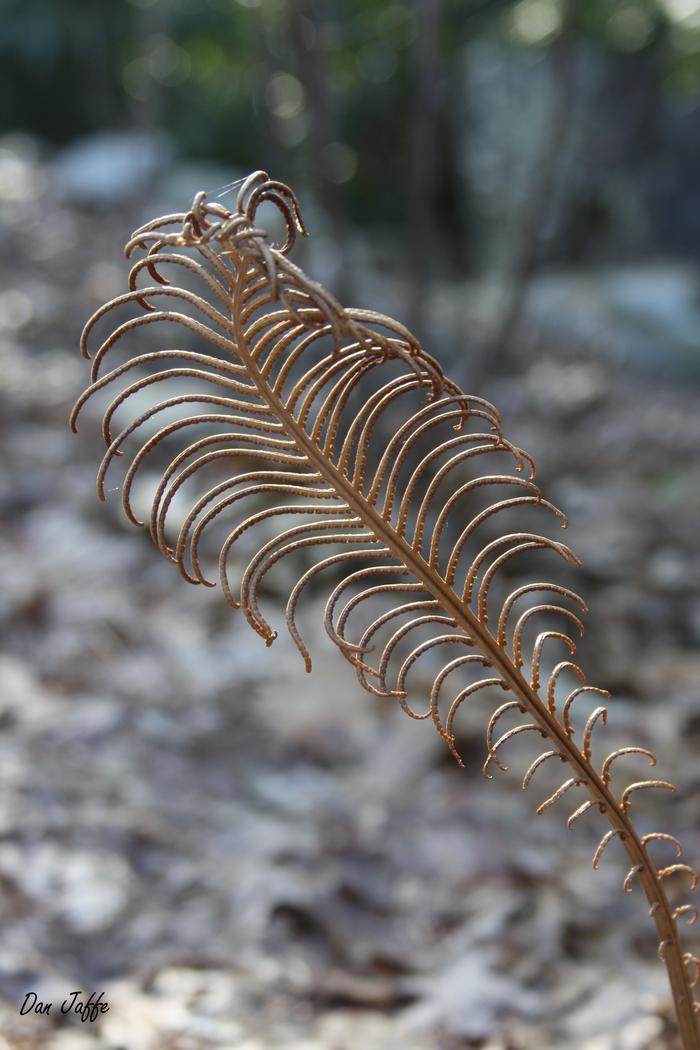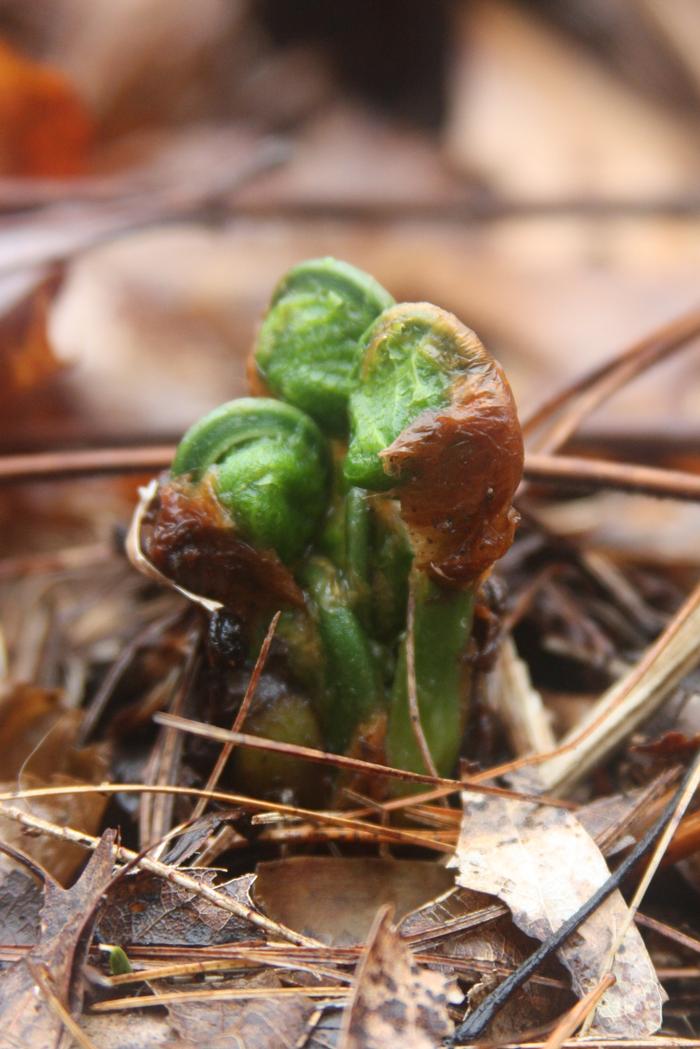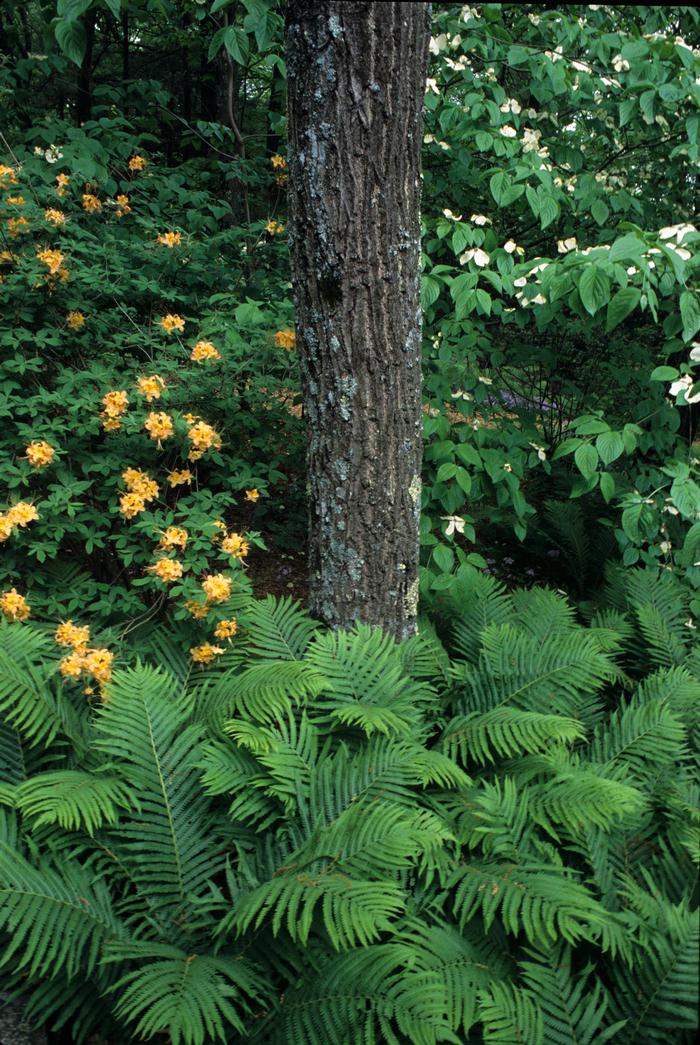General Description
Bloom Description: Ferns reproduce by spores rather than by seeds, so do not produce flowers! The fiddleheads are edible and can be sustainably harvested if they're coming from a small subset of a large colony.
Growth Habit & Shape: This fern produces very tall fronds, between 2-4 feet in heigh on average. It will form a roundish clump, and individuals reproduce vegetatively along rhizomes to form colonies.
Soil Preferences: Organically rich, moist soil (sometimes saturated), with plenty of leaf mold. Best growing conditions are found in rich bottomlands, floodplains, alluvial soils and swamplands.
Root Description: The roots are an upright rhizome, meaning that individual vase-shape clumps will arise and eventually form colonies.
Garden Uses: As a taller fern, this plant is often used as a foundation planting, presumably on the north side of buildings where light is limited. It grows well in wetlands and can be used as a plant for low wet spots, or for restoration of wetland edges and stream banks. It is tolerant of dappled and deep shade. It has a striking, tropical effect as a mass planting in the garden, where it can form a reasonably-sized colony if growing conditions are right for it.
Best Management & Maintenance: Allowing this colonial spread to form masses of clumps makes for a nice landscape show and a sufficient source of fiddleheads for the foodies among us. For those who wish to eat, make sure to harvest less than 20% of the emergent fronds in a colony and only from mature individuals, which should display at least 4 new fiddleheads arising from the same clump.
Matteuccia struthiopteris is adapted to floodplains where new soil matierial is depositied each year. An application of humus or leaf mold may replace the expected soil deposition for nutrition and stability of growth.
Common Problems: none when growing conditions are appropriate
Benefits
Ornamental Value: With plumose fronds (leaves) that look like ostrich feathers, this large fern makes a great background plant and naturalizes beautifully in moist, shady spots in need of a pop of bright green.
Wildlife Benefits: Fiddleheads and fronds offer browse for larger herbivores, and fronds provide cover for smaller mammals and ground-frequenting birds. This fern is a larval host for several moth species.
Other Practical/Environmental Benefits: Shallow rhizomes trap soil underneath, which may prove useful in preventing erosion along streambanks and in floodplains.
Use in place of: Tall non-native fern species
Ecology
Habitat:
Rich woods, often in alluvial or mucky swamp soils.
Ecosystems:
This species is listed in the following United States National Vegetation Classification macrogroups:
-M502 Appalachian-Northeastern Oak - Hardwood - Pine Forest & Woodland Macrogroup
-M883 Appalachian-Interior-Northeastern Mesic Forest Macrogroup
-M014 Laurentian-Acadian Mesic Hardwood - Conifer Forest Macrogroup
-M029 Central Hardwood Floodplain Forest Macrogroup
-M504 Laurentian-Acadian Flooded & Swamp Forest Macrogroup
-M028 Great Plains Flooded & Swamp Forest Macrogroup
-M300 North American Boreal Flooded & Rich Swamp Forest Macrogroup
-M061 Eastern North American Cool Temperate Seep Macrogroup
M069 Eastern North American Marsh, Wet Meadow & Shrubland Macrogroup
Response to Disturbance: Ferns have roots which are close to the surface, and the upright rhizome on this species produces roots and fronds close to the surface of the soil, making the species highly susceptible to damage from trampling. If you chose to transplant this species, select plants close to the edge of the colony to avoid disturbing the whole group.
Native State Distributions:
Canada: AB, BC, LB, MB, NB, NF, NS, NT, ON, PE, QC, SK, YT
USA: AK, IA, IL, IN, MA, MD, ME, MI, MN, MO, ND, NE, NH, NJ, NY, OH, PA, RI, SD, VA, VT, WI, WV
Wetland indicator status: FAC
References
Return to Top



